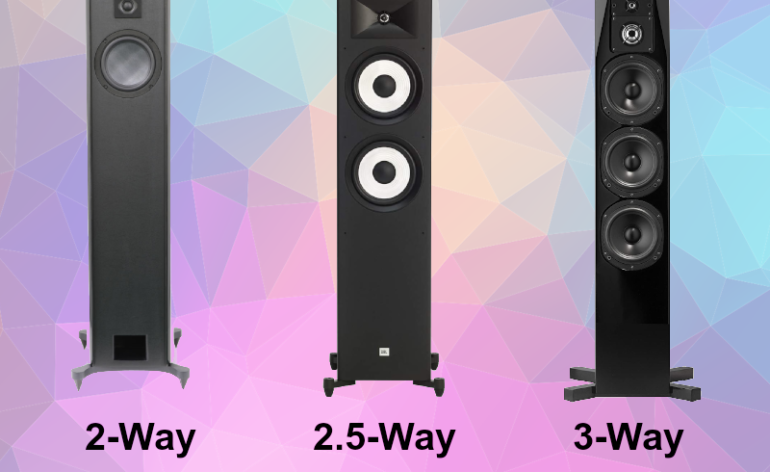Should I get a 2, 2.5, or 3-Way Speaker?
There are lots of different speaker designs out there. Some are based on size, others on driver type, and still others on the number of drivers. All of these factors work together to create the sound you experience from a speaker. We’ve said before that you can’t judge the quality of a speaker based on a single factor. So, can you look at the driver configuration (2, 2.5, or 3-way) and crossover design and make some predictions about performance? Let’s discuss.
What are the Differences Between 2, 2.5, or 3-Way Speaker Designs?
First, what are the differences between the 2, 2.5, and 3-way speaker designs? Well, it is all about the crossover. While the number of drivers can be greater, a 2-way design requires at least two drivers. A woofer and a tweeter. The 2.5 and 3-way designs require at least three drivers. Usually one tweeter and either two woofers or one midrange and one woofer. The differences come up in the crossover.
The crossover point is where one driver stops playing and the other starts. In a two-way speaker design, the crossover happens between the tweeter and the woofer. In a 3-way design, there are two crossover points. One between the tweeter and the midrange, and a second between the midrange and the woofer.
The 2.5-way speaker design is slightly different. It usually has one tweeter and two woofers. There is a crossover between the tweeter and one of the woofers. That woofer handles both the midrange and the bass frequencies. The second woofer doesn’t crossover into the tweeter and just helps out with the bass frequencies.
Are the Inherent Performance Benefits Between the Different Designs?
Now that you understand the difference between 2, 2.5, and 3-way speaker designs, is one better? If you ask a speaker designer, they’ll tell you they “prefer” one over the others depending on the speaker they are creating. A small, satellite or bookshelf speaker lends itself to a 2-way design based on the size of the cabinet alone. A large, floorstanding speaker has the room for a 3-way design.
Beyond that, the 3-way design has, by having more crossover points, a more complicated crossover design. If the speaker designer is comfortable with designing complex crossovers, that may not be a hindrance. For some, it will be. We know speaker designers that put a simple resistor on their tweeter and call it a crossover.
The 2-way and 3-way (and there are 3.5, 4, and other designs but they are less common) designs have the advantage of having dedicated drivers for specific frequencies. The 2.5-way design benefits from the additional bass reinforcement. Is one better than the other?
Shop with your Ears
In the end, the differences between the 2, 2.5, and 3-way speaker designs are immaterial. The mixture of the crossover, cabinet, driver quality and more work together to create the sound you enjoy from your speakers. As an AV professional, I can honestly say I never ask or even think to look at what type of speaker design when reviewing speakers. Because it doesn’t matter.
There are great 2-way speakers and terrible ones. There are fantastic 2.5-way speakers and others that aren’t so good. We all want a way to limit the possible choices of speakers when we are shopping. There are a lot of speakers out there and you can get overwhelmed with the number of choices. But the crossover design isn’t a good metric to use. We’ve got some better ways to limit your choices. We guarantee that if you listen to enough speakers, you’re going to find 2, 2.5, and 3-way speakers that you love. And probably some that you hate. Buy the ones you love and don’t pay any attention to the crossover design.


